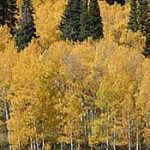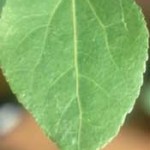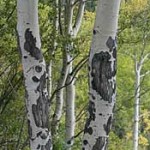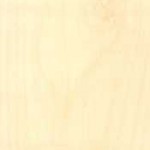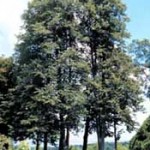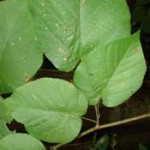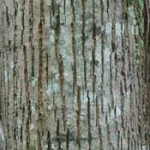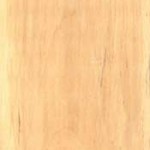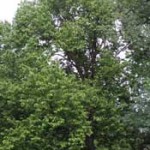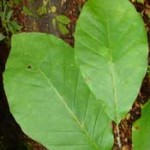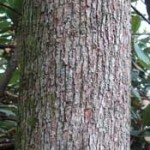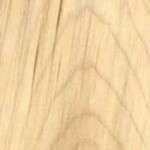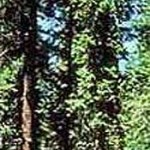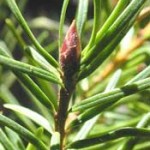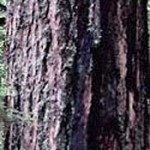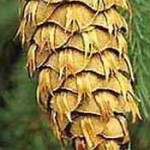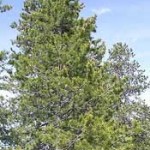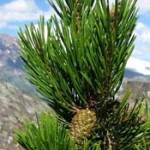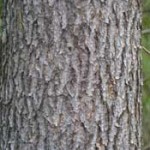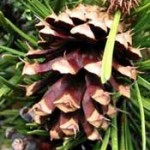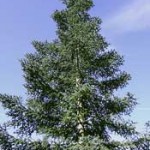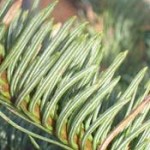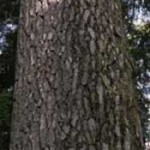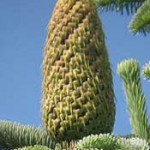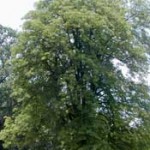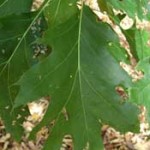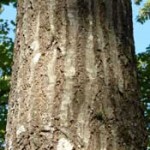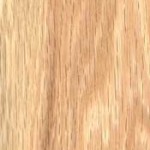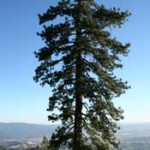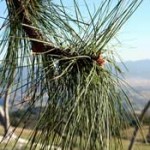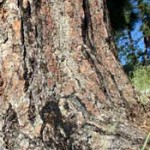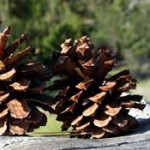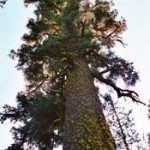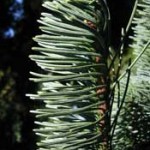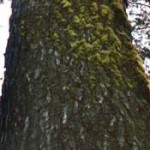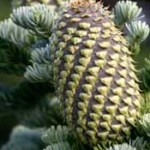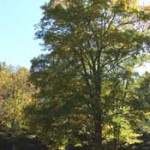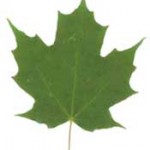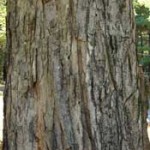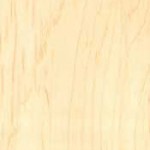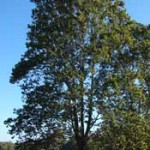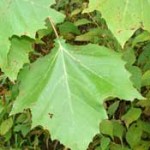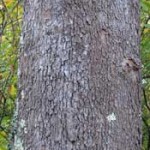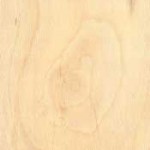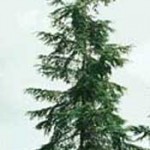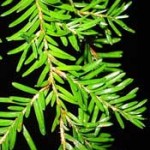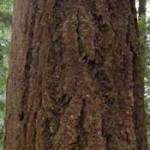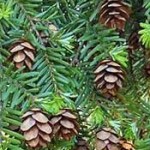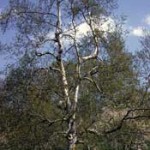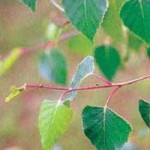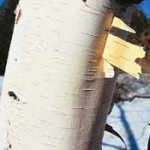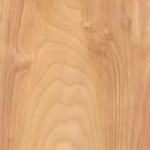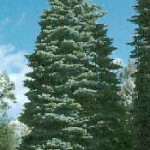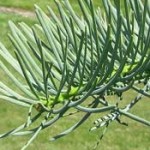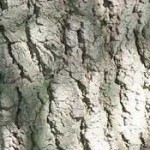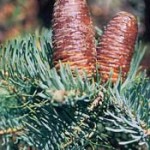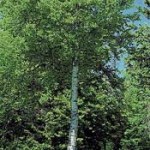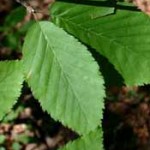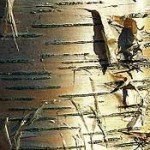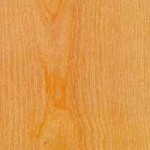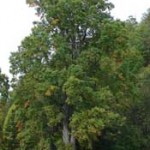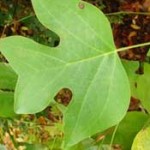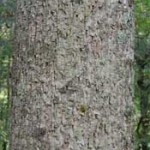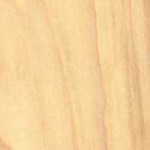Where do the trees come from?
Columbia Forest Products tries to maximize the use of tree species that are abundant in the regions near our plywood and veneer facilities. That means that we use only species that grow naturally and in great numbers in the region.
This ensures biodiversity in the ecosytem and that no particular species will be over harvested.
This is why you’ll find our plywood cores consist of poplar in the South, aspen in the North and fir or pine in the West. These are the trees that are plentiful in those regions.
To see where our most common timber resources originate, as well as a profile of each species’ characteristics, select from the list.
Aspen
Basswood
Cucumber Magnolia
Douglas Fir
Lodgepole Pine
Noble Fir
Northern Red Oak
Ponderosa Pine
Shasta Red Fir
Sugar Maple
Sycamore
Western Hemlock
White Birch
White Fir
Yellow Birch
Yellow Poplar
Aspen
Populus tremuloides
Also known as Quaking Aspen, Trembling Aspen, Golden Aspen
Natural Range (see above) : West – Northeast

Form
Narrow, rounded crown with thin foliage.
Leaves
Mostly round with a short point, shiny green above and dull underneath.
Flowers
Brownish catkins with male and female flowers on different trees.
Site Requirements
Aspen thrives in northern latitudes where it receives abundant snowfall and rainfall. It prefers northern and eastern slopes in a variety soils.
Uses
Wood products made from aspen range from chips and particle board to plywood, shingles, and dimension lumber. Specialty uses are sauna benches and playground structures because aspen does not easily splinter.
Back to Top
Basswood
Tilia americana
Also known as Bee-tree, American Linden
Natural Range (see below) : Midwest – Northeast

Form
Large tree with long trunk and a dense crown of many small, often drooping branches.
Leaves
3 to 6 inches long and about as wide. They are somewhat heart-shaped with saw-toothed edges.
Flowers
About 1/2″ wide with 5 yellowish petals, fragrant in clusters in early summer.
Site Requirements
Moist soils of valleys and uplands; in hardwood forests.
Uses
The flowers are known for attracting bees and making good honey and the wood is prized for hand carving. It is also used for making crafts, veneer for plywood, furniture, and pulpwood.
Back to Top
Cucumber Magnolia
Magnolia acuminata
Also known as Cucumbertree, Blue Magnolia
Natural Range (see below) : Midwest, South, Northeast

Form
Tree with straight trunk and narrow crown of short, upright spreading branches.
Leaves
5 to 10 inches, elliptical and abruptly short pointed.
Flowers
2 to 3 inches long cup-shaped, with six rounded pedals that are yellow and orange that bloom in the spring.
Site Requirements
Moist, well drained soils in the Appalachian Mountains. Found in mixed hardwood forests. Found in hardiness zones 5-8.
Uses
Cucumber is usually sold as yellow-poplar. It is generally used for crates, toys, furniture, blinds, and trim. Cucumber is also used for lumber, furniture parts, rotary-cut veneer for use in plywood, and pulpwood.
Back to Top
Douglas Fir
Pseudotsuga menzesii
Also known as Red Fir, Oregon Pine, Douglas Spruce
Natural Range (see below) : West

Form
Very large tree with narrow crown and drooping branches. Often reaches heights of 200 feet.
Needles
Evergreen, mostly in two rows 3/4 to 1-1/4 inches long.
Cones
2 to 3 inches and narrowly egg-shaped with 3-pointed bracts.
Site Requirements
None.
Uses
Used for lumber and plywood. Also grown for Christmas trees in the west.
Back to Top
Lodgepole Pine
Pinus contorta
Also known as Tamarack Pine, Shore Pine
Natural Range (see below) : West

Form
Tall with narrow, dense, conical crown.
Needles
Evergreen, two in a bundle, 1-1/4 to 2-3/4 inches long.
Cones
1 to 2 inches long and remains closed on tree for many years until a fire causes them to open.
Site Requirements
Widely distributed tree that prefers high mountains and well drained soils.
Uses
Important tree species used for framing lumber, plywood, and railroad ties.
Back to Top
Noble Fir
Abies procera
Also known as Red Fir, White Fir
Natural Range (see below) : Pacific Northwest

Form
Conical tree with rounded crown and can reach heights over 150 feet.
Needles
Evergreen spreading in two rows, 1 to 1-1/2 inches long.
Cones
4 to 7 inches long and upright on twigs.
Site Requirements
Mountains in moist soils. Prefer cool areas with deep snowfall.
Uses
Valued for its strength compared to other firs and woods. Historically used for construction of airplanes and ladders. Still used for lumber and plywood today.
Back to Top
Northern Red Oak
Quercus rubra
Also known as Red Oak, Gray Oak
Natural Range (see below) : Midwest, South, Northeast

Form
Large tree with rounded crown of stout, spreading branches.
Leaves
4 to 9 inches long and 3 to 6 inches wide with 7 to 9 shallow, wavy lobes with bristle tipped teeth.
Fruit
Egg shaped acorns 5/8″ to about 1 1/8″. Acorns from red oaks mature in their second year.
Site Requirements
Grows best on northerly and easterly aspects on lower to middle slopes. Prefers moist, fertile soils.
Uses
Generally, the most important hardwood lumber species in the US. Used for flooring, furniture, millwork, crossties, mining timbers, veneer, and pulpwood. This species is also a popular ornamental shade tree.
Back to Top
Ponderosa Pine
Pinus ponderosa
Also known as Western Yellow Pine, Blackjack Pine
Natural Range (see below) : West

Form
Large tree with broad, open, conical crown.
Needles
Evergreen, two or three in a bundle, 4 to 8 inches long.
Cones
2 to 6 inches long.
Site Requirements
Similar to most western conifer species that prefer deep snowfalls and high elevations.
Uses
Considered the most commercially important western pine. It is used for lumber, plywood, and is often made into doors, furniture, and other products for homes.
Back to Top
Shasta Red Fir
Abies magnifica
Also known as California Red Fir, Silvertip
Natural Range (see below) : West

Form
Large conical tree with a rounded top and nearly horizontal branches. Often reaches 100 feet or taller.
Needles
Evergreen, spreading in two rows 3/4 to 1-3/8 inch long. They are 4-sided and blue-green with whitish lines.
Cones
Cones mature to 6 to 9 inches long and 2 to 3 inches in diameter and are found mostly in the upper crown of the tree. Shasta Fir is characterized by yellowish bracts on the cone.
Site Requirements
High mountains (above 5,000 ft) in California and Oregon in the Cascade Mountains and Coast Ranges. Prefers dry summers and deep winter snows.
Uses
Mostly used for construction and framing lumber and plywood. Red fir is also grown for Christmas trees and commonly sold as “silver tip” fir.
Back to Top
Sugar Maple
Acer saccharum
Also known as Hard Maple, Rock Maple
Natural Range (see below) : Midwest, Northeast

Form
Large tree with rounded dense crown.
Leaves
3 1/2 to 5 1/2 inches long with 5 deep long-pointed lobes.
Fruit
Winged samaras, often called “helicopters” due to the spinning seed that is wind dispersed.
Site Requirements
Grows best on moist soils of uplands and valleys.
Uses
An important hardwood lumber species in the US. Maple is used for flooring, furniture, millwork, veneer, and pulpwood. The veneer is prized from this tree for the special patterns it makes such as birdseye, fiddleback, and curly maple. Maple syrup is made from this species.
Back to Top
Sycamore
Platanus Occidentalis
Also known as American Planetree, Button-wood, Buttonball Tree
Natural Range (see below) : Midwest, South, Southeast, Northeast

Form
Usually has a massive, straight trunk with spreading, often crooked branches.
Leaves
4 to 8 inches long with 3 or 5 shallow, short-pointed lobes.
Fruit
1″ diameter cluster of nutlets that matures in autumn and falls in winter. Sycamore begins to bear fruit at about 6 to 7 years of age.
Site Requirements
Sycamore prefers wet soils along streams and swamps and is at home in flood plains and moist bottomland.
Uses
Sycamore is used for furniture parts, millwork, and specialty products such as butcher block. This species is also used for biomass, veneer in plywood, and for pulpwood.
Back to Top
Western Hemlock
Tsuga heterophylla
Also known as West Coast Hemlock, Pacific Hemlock
Natural Range (see below) : West

Form
100 to 150 feet tall at maturity, with a conical crown and short drooping branches.
Needles
Evergreen in two rows, 1/4 to 3/4 inches long. Shiny dark green above with two whitish bands beneath.
Cones
3/4 to 1 inch long and hanging down on the ends of twigs.
Site Requirements
Prefers moist soils of lower slopes and often occurs in pure stands. Found along the coast in mild, humid climate.
Uses
All purpose raw material for forest industry, being used for lumber, poles, railroad ties, plywood, and pulpwood.
Back to Top
White Birch
Betula papyrifera
Also known as Paper Birch, Canoe Birch
Natural Range (see below) : Northwest, Canada, Northeast

Form
Narrow open crown with nearly horizontal branches.
Leaves
2 to 4 inches long, ovate and long pointed, with doubly saw-toothed margins.
Fruit
Drooping catkins near the tip of twigs.
Site Requirements
Grows best on moist soils of uplands and valleys.
Uses
Paper birch is used for lumber and plywood, but is also frequently used for craft materials. The bark from this species was used for the traditional birch bark canoes.
Back to Top
White Fir
Abies concolor
Also known as Silver Fir, Concolor Fir
Natural Range (see below) : West

Form
Large, wide spread tree with narrow pointed crown. Branches are symmetrical and horizontal.
Needles
Evergreen growing at right angles in two rows, 1-1/2 to 2-1/2 inches long. Light blue-green with whitish lines.
Cones
3 to 5 inches long on top most branches and have hidden bracts.
Site Requirements
Moist rocky soils, often in pure stands. Grows best in areas of deep winter snows.
Uses
White fir is used for framing lumber, plywood, and Christmas trees.
Back to Top
Yellow Birch
Betula alleghaniensis
Also known as Grey Birch, Silver Birch
Natural Range (see below) : Canada, Northeast

Form
Large tree with rounded crown of drooping branches.
Leaves
3 to 5 inches long, elliptical and double saw-toothed margins.
Fruit
Drooping catkins near the tip of twigs.
Site Requirements
Grows best on cool moist soils of uplands and valleys.
Uses
Yellow birch is used for lumber and veneer in making furniture, plywood, cabinets, boxes, and interior doors. It is one of the principal hardwoods used in the distillation of wood alcohol.
Back to Top
Yellow Poplar
Liriodendron tulipifera
Also known as Tulip Tree, Tulip Poplar
Natural Range (see below) : South, Southeast, Northeast

Form
One of the tallest and straightest of the Appalachian hardwoods, with a long straight trunk and narrow crown that spreads with age.
Leaves
4 to 8 inch leaves that are distinctive in shape, usually having four short pointed lobes.
Flowers
2 to 3 inches long cup-shaped, with six rounded pedals that are yellow and orange that bloom in the spring.
Site Requirements
Yellow-poplar grows best in full sunlight on moist, well drained soils. The best growth usually occurs on north and east aspects, on lower slopes, in sheltered coves, valleys, and concave slopes.
Uses
Yellow-poplar is an extremely versatile wood with a multitude of uses such as crates, toys, and furniture. Most recent uses of the wood have been for lumber for unexposed furniture parts and core stock, rotary-cut veneer for use in plywood, and as pulpwood.
Back to Top
Reference material provided by:
- Audubon Society Field Guide to Trees Western Region, published by Alfred A. Knopf, Inc, New York, Copyright 1980, Elbert L. Little.
- U.S. Forest Service Silvics Manual, Volume 1, Conifers, Agriculture Handbook 654, Russell M. Burns and Barbara H. Honkala, 1990.





